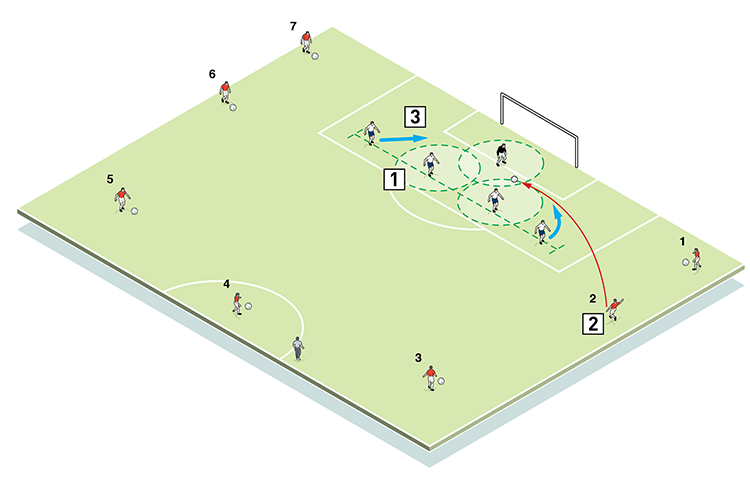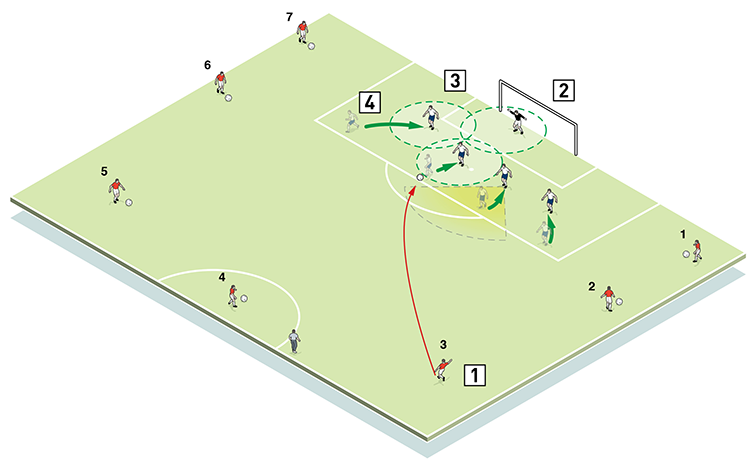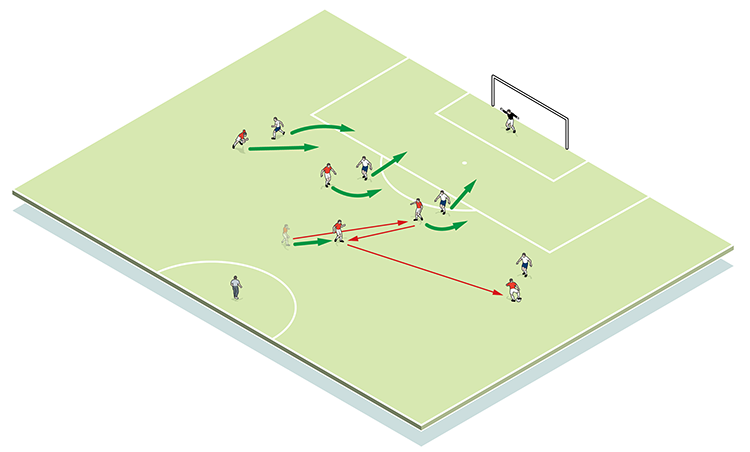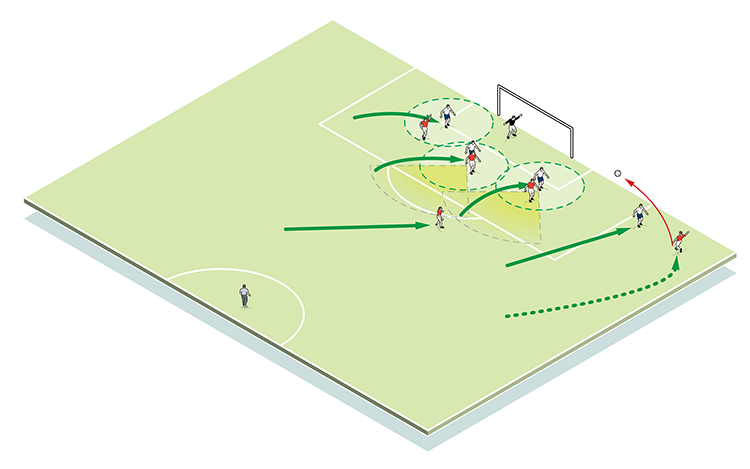




OUR BEST EVER OFFER - SAVE £100/$100
JOIN THE WORLD'S LEADING PROFESSIONAL DEVELOPMENT PROGRAMME
- 12 months membership of Elite Soccer
- Print copy of Elite Player & Coach Development
- Print copy of The Training Ground
You are viewing 1 of your 1 free articles
Defending crosses
Challenge your players to properly defend crosses into the 18-yard box with this session that examines the requirements of technique, communication, awareness and a true desire not to concede goals.
| Area | Up to a half-pitch |
| Equipment | Balls, cones, goals |
| No. of Players | Up to 11v11 |
| Session Time | Box delivery and progression 20mins 4v4 plus midfielder 10mins |
This session looks at how to properly defend crosses into the 18-yard box, and examines the requirements of technique, communication, awareness and a true desire not to concede goals.
At most levels, defenders have a tendency to ball watch, so because of that they must be aware of attackers as much as possible. Choosing the right type of clearance is important – players shouldn’t panic or slash at the ball. Because of these points, it’s important we practise this session at least once a week so that players get into (and stay in) good habits.
I always say good defending is as important as scoring a goal. If players can combine knowledge and skill with a healthy dose of bravery, they will do well.
What do I get the players to do?
Box delivery
We set up as shown (1a), with seven servers around the box ready to send in crosses for the four defenders and keeper. Each server is numbered, and on the coach’s call, that player delivers, although different servers have to send in different types of crosses:
Servers 1 and 7: a chipped or driven cross
Servers 2 and 6: an outswinging cross (1b)
Servers 3 and 5: an inswinging cross (1c)
Server 4: a straight ball
For each ball delivered, defensive team mates must organise around the player whose task it is to clear the ball.
1a

2. The right full-back covers the back post
3. Central defenders cover near-post and centre goal areas
4. The left full-back has moved to close him down and block a driven cross
5. Server 1 sends over a chipped cross
1b

2. The next cross is an out-swinging cross from server 2
3. Full-backs must be ready to drop and cover if centre-backs do not deal with the cross
1c

2. The keeper controls his six-yard box
3. Communication between the full-back, centre-back and keeper is vital, with one player needing to take ownership of the clearance
4. The full-back covers the far post in the event that a clearance isn’t properly made and the ball falls in front of goal
What are the key things to look out for?
When the ball is being delivered, defenders must be ready to react, so the body position needs to be correct. This means being able to see not only the ball, but space around them where opponents might be.
Each clearance must have height and distance, with defenders communicating clearly and concisely with team mates. This could be to advise of a ‘man on’ situation, or to ensure that once the ball is cleared, defenders don’t ‘sit in’, instead squeezing up a yard or two in following the ball out.
How do I progress the session?
To progress, we add four attackers who go up against the defenders for each cross (2).
2

4v4 plus midfielder
For the next practice, we use a half-pitch. It’s 4v4 again, plus a lone midfielder. The midfielder starts, feeding into a central striker, who plays to a winger (3a). The full-back goes to close him down but must eventually allow the cross to be put in. Now, a 3v3 situation occurs in the box, with two defenders covering the posts and the third protecting the middle of the goal (3b). We then rerun on the other side.
3a

3b

We can move this into an 11v11 game with crosses encouraged from the wings with the use of tram lines on the side of the pitch
Related Files
Editor's Picks
Attacking transitions
Deep runs in the final third
Using the goalkeeper in build-up play
Intensive boxes drill with goals
Penetrating the final third
Creating and finishing
My philosophy
Pressing initiation
Compact team movement
Coaches' Testimonials

Alan Pardew

Arsène Wenger

Brendan Rodgers

Carlos Carvalhal

José Mourinho

Jürgen Klopp

Pep Guardiola

Roy Hodgson

Sir Alex Ferguson

Steven Gerrard
Coaches' Testimonials

Gerald Kearney, Downtown Las Vegas Soccer Club

Paul Butler, Florida, USA

Rick Shields, Springboro, USA

Tony Green, Pierrefonds Titans, Quebec, Canada
Join the world's leading coaches and managers and discover for yourself one of the best kept secrets in coaching. No other training tool on the planet is written or read by the calibre of names you’ll find in Elite Soccer.
In a recent survey 92% of subscribers said Elite Soccer makes them more confident, 89% said it makes them a more effective coach and 91% said it makes them more inspired.
Get Monthly Inspiration
All the latest techniques and approaches
Since 2010 Elite Soccer has given subscribers exclusive insight into the training ground practices of the world’s best coaches. Published in partnership with the League Managers Association we have unparalleled access to the leading lights in the English leagues, as well as a host of international managers.
Elite Soccer exclusively features sessions written by the coaches themselves. There are no observed sessions and no sessions “in the style of”, just first-hand advice delivered direct to you from the coach.







